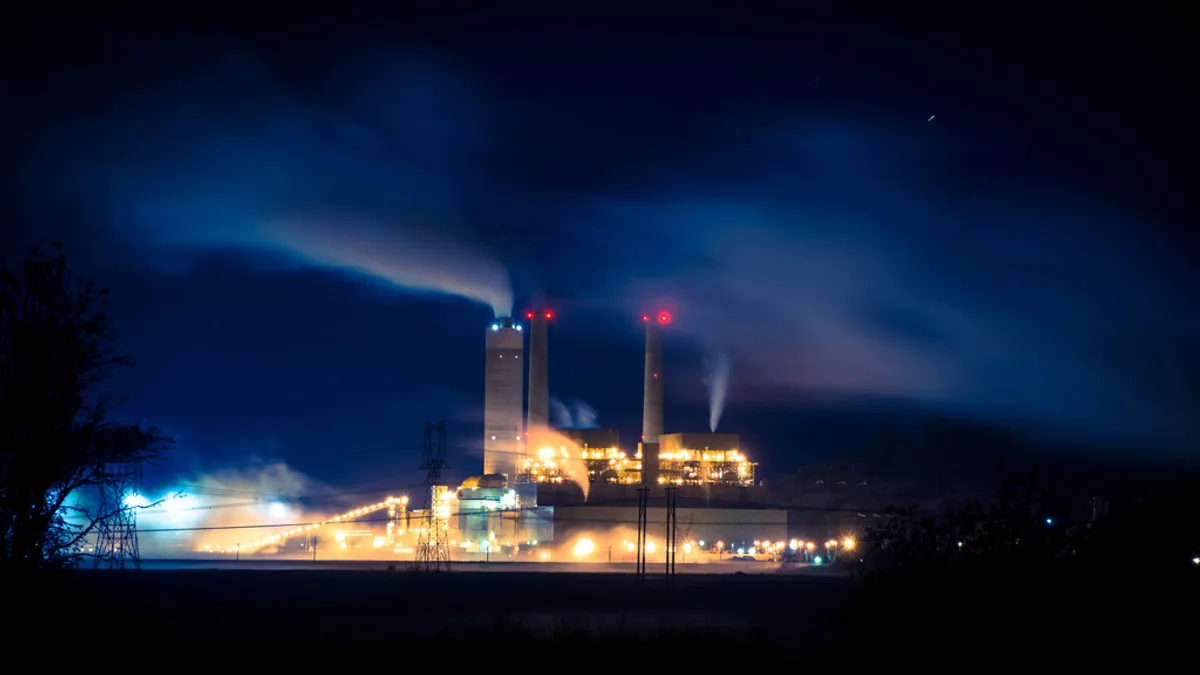Dive Brief:
- The federal government's Clean Power Plan will lead to the shuttering of about 90 GW of coal-fired production, more than twice the amount expected by 2040 without the new regulations, according to new estimates from the U.S. Energy Information Administration.
- Most of the coal retirements are expected in the first five years of the plan, EnergyWire points out, as utilities and regulators prepare for the proposed 2020 start date for emissions compliance.
- The EIA projects less than a 5% increase in electricity prices as a result of the plan. Its analysis shows significant reduction in carbon emissions driven by a shift from coal to gas-fired generation for early compliance before renewables begin to grow in the mid-2020s.
Dive Insight:
Updated analysis from EIA shows power prices will rise about 4.9% under the federal government's plan to reduce carbon emissions. But the report also shows that the CPP does reduce emissions significantly: 2030 reductions range from 484 to 625 million metric tons, EIA said.
"The projected power sector emissions level in 2030 ranges from 1,553 to 1,727 million metric tons across the cases, reflecting a reduction of between 29% and 36% relative to the 2005 emissions level of 2,416 million metric tons," the report concluded.
Initial reductions will largely come from switching to gas-fired power, but efficiency and renewables will play a growing role within a decade. If nuclear capacity were treated similarly to renewables, as many nuclear-heavy utilities have argued, the report found nuclear generation would rise as a result of the plan.
Without the Clean Power Plan, EIA expects that 40 GW of coal capacity would retire. Just how states will choose to comply with the plan remains to be seen, as the regulations are not yet final.
"Demand-side energy efficiency plays a moderate role in compliance, relative to the early role of natural gas and the eventual role of renewables," EIA concluded. While the economics of more gas generation and expanded renewables will vary regionally, the agency said key factors include combined cycle utilization rates and the potential renewable penetration into states with no renewable standards.
The EPA will annouce its finalized Clean Power Plan this summer.














